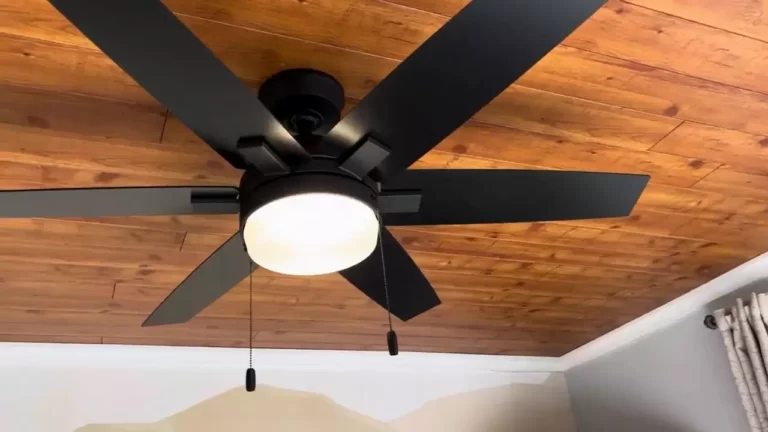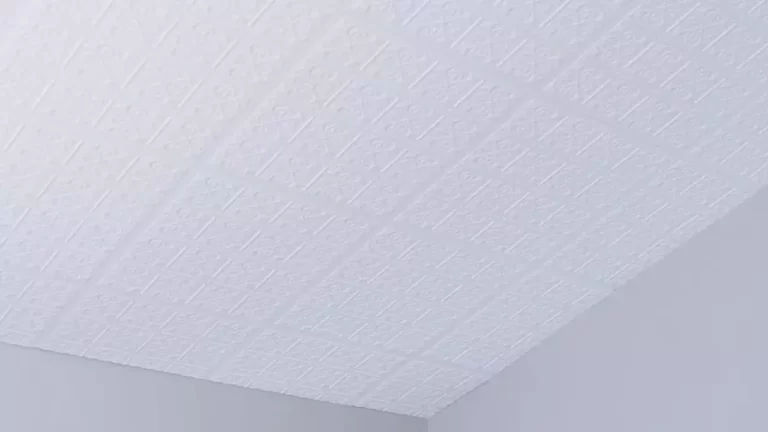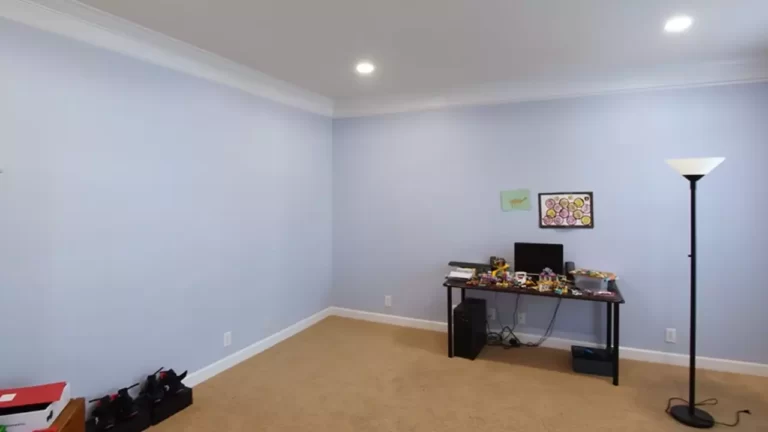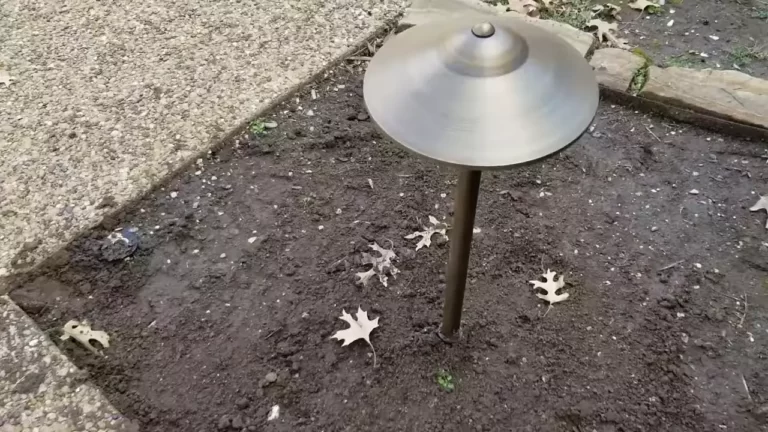How to Install Ceiling LED Lights?
To install ceiling LED lights, follow these steps: first, turn off the power to the circuit that connects to the lights. Then, determine the location of the lights and mark the spots accordingly.
Lastly, connect the lights to the power supply using appropriate wiring and secure them in place. Once done, turn the power back on to test the lights. Installing ceiling LED lights requires turning off the power, marking the spots, connecting the lights, and testing them.
These steps can be completed with a few simple tools and proper wiring techniques. We will discuss each step in detail, ensuring a successful installation process. Let’s get started!
Choosing The Right Led Lights For Your Ceiling
When it comes to installing LED lights on your ceiling, choosing the right ones is crucial. Not only do LED lights provide bright and energy-efficient lighting, they also enhance the overall aesthetics of your space. In this section, we will discuss the factors to consider when selecting LED lights and help you understand the different types available.

Factors to Consider when Selecting LED Lights
Before you embark on the installation process, it’s important to consider a few key factors to ensure you choose the right LED lights for your ceiling. Here are the factors you should keep in mind:
- Color Temperature: The color temperature of LED lights determines the ambiance of your room. Whether you prefer warm, neutral, or cool lighting, you can choose from a range of color temperatures available.
- Brightness: The brightness level of LED lights is measured in lumens. Depending on the size of your space and the purpose of the lighting, you will want to consider the appropriate brightness level to ensure optimal illumination.
- Dimmability: If you desire the flexibility to adjust the brightness according to your needs, opt for dimmable LED lights. They allow you to create different moods and save energy when full brightness is not required.
- Energy Efficiency: LED lights are already known for their energy efficiency, but it’s still worth considering the energy consumption of the specific LED lights you are considering. Look for lights with high energy efficiency ratings to save on electricity costs.
- Lifespan: LED lights are durable and long-lasting. Consider the lifespan of the lights you are choosing to minimize the need for frequent replacements, keeping maintenance efforts to a minimum.
- Beam Angle: The beam angle determines the spread of light from the LED bulbs. For general illumination, a wider beam angle is recommended, while a narrower beam angle is ideal for task lighting.
Understanding Different Types of LED Lights Available
Now that you are aware of the factors to consider, let’s take a closer look at the different types of LED lights available for your ceiling:
| Type | Description |
|---|---|
| Recessed LED Lights | These lights are installed flush with the ceiling, giving a sleek and modern look to your space. They are great for providing focused illumination and can be used in various areas of your home. |
| Pendant LED Lights | If you prefer a decorative lighting solution, pendant LED lights are an excellent choice. They hang from the ceiling, adding style and character to any room. |
| Flush Mount LED Lights | Flush mount LED lights are installed directly onto the surface of the ceiling. They offer a seamless appearance and are suitable for low-ceilinged spaces. |
| Chandelier LED Lights | For a touch of elegance and sophistication, chandelier LED lights are the perfect option. They are typically used in dining rooms or entryways to create a dramatic focal point. |
Each type of LED light has its own unique characteristics, so consider your personal style and the requirements of your space when choosing the right one for your ceiling.
By selecting LED lights that meet your specific criteria and understanding the different types available, you are well on your way to achieving the perfect lighting for your ceiling.

Preparing The Ceiling For Installation
Before you can install your new ceiling LED lights, you need to prepare the ceiling to ensure a successful and safe installation. This involves taking measurements and checking the electrical wiring. In this section, we will guide you through the process step by step.
Measuring the ceiling to determine the placement of lights
Firstly, you need to measure your ceiling to determine the optimal placement of your LED lights. Take a tape measure and measure the length and width of the ceiling. It’s important to mark these measurements accurately, so take your time and double-check your work.
Once you have your measurements, you can plan the layout of your lights. Consider the size and shape of the room, as well as any existing fixtures or furniture that may impact the placement. You want to ensure that the lights are evenly spaced and provide adequate illumination throughout the space.
Creating a simple sketch or diagram of the ceiling and marking where each light will go can be helpful during the installation process. This way, you can visualize the final result and make any necessary adjustments before starting the installation.
Checking the electrical wiring
Before proceeding with the installation, it’s crucial to check the existing electrical wiring in your ceiling. This step is essential for your safety and to avoid any potential electrical hazards.
If you are unfamiliar with electrical work, it’s highly recommended to consult a licensed electrician who can inspect the wiring and make any necessary adjustments. They will ensure that the wiring can handle the additional load of the LED lights and that it meets your local electrical codes and regulations.
If you have the necessary knowledge and experience, you can check the wiring yourself. Turn off the power supply to the room at the breaker box and use a voltage tester to verify that the wires are not live. Look for any signs of damage, such as frayed wires or exposed connectors, and address these issues before proceeding with the installation.
Remember, safety should always be your top priority when working with electrical wiring. If you are uncertain or uncomfortable with any step of the process, it’s best to seek professional assistance.
Step-By-Step Guide To Install Led Lights In The Ceiling
Step-by-Step Guide to Install LED Lights in the Ceiling
Installing LED lights in your ceiling can greatly enhance the ambience and functionality of any space. By following this step-by-step guide, you can achieve a professional-looking installation that will brighten up your room. In this guide, we will walk you through each stage of the installation process, including turning off the power supply, marking the spots for the lights, drilling holes for the lights, running electrical wiring and connecting the lights, mounting the LED lights in the ceiling, and testing the lights and making adjustments.
Step 1: Turning off the power supply
The first step in any electrical installation is to ensure your safety by turning off the power supply. Locate the circuit breaker panel in your home and turn off the breaker that controls the electricity to the room where you will be installing the LED lights. Always double-check with a voltage tester to ensure that the power is truly off before proceeding with the installation.

Step 2: Marking the spots for the lights
Once you have turned off the power supply, it’s time to mark the spots where you want to install the LED lights in your ceiling. Use a measuring tape and a pencil to mark the desired locations. Be sure to consider the layout of the room and any furniture or fixtures that may obstruct the placement of the lights.
Step 3: Drilling holes for the lights
With the spots marked, it’s time to drill holes in the ceiling for the lights. Use a drill with a hole saw attachment that matches the diameter of your LED lights. Carefully position the drill on the marked spots and slowly drill into the ceiling. Take care not to apply too much pressure or drill too deeply, as this could damage the ceiling or wiring.
Step 4: Running electrical wiring and connecting the lights
Once the holes are drilled, you will need to run electrical wiring from the power source to the location of the lights. This may involve removing a section of the ceiling to access the wiring. Follow the manufacturer’s instructions for connecting the wires to the LED lights, making sure to match the positive and negative terminals correctly. Use wire nuts or connectors to secure the connections.
Step 5: Mounting the LED lights in the ceiling
After the wiring is in place, it’s time to mount the LED lights in the ceiling. Insert the lights into the drilled holes and secure them using the provided mounting brackets or clips. Ensure that the lights are flush with the ceiling and that the mounting brackets are securely fastened.
Step 6: Testing the lights and making adjustments
With the LED lights installed, it’s time to test them and make any necessary adjustments. Turn on the power supply and switch on the lights. Check each light to ensure it is functioning properly and adjust the positioning if needed. Make sure all connections are secure and that the lights are evenly distributed across the ceiling.
You have now successfully completed the installation of LED lights in your ceiling. Enjoy the enhanced lighting and energy efficiency that LED lights provide!
Tips For A Safe And Successful Installation
Properly insulating the connections
During the installation of ceiling LED lights, it is crucial to ensure that the connections are properly insulated. This is important for both safety and efficiency. A poorly insulated connection can increase the risk of electrical shocks and cause energy wastage. To properly insulate the connections, follow these steps:
- Start by carefully stripping the insulation from the wires using wire strippers. Make sure to expose the appropriate length of wire for connection.
- Twist the exposed wires together in a clockwise direction to create a secure connection. This will help prevent loose connections that can lead to electrical problems.
- Apply electrical tape to the twisted wires, making sure to completely cover the exposed portion. This will provide an extra layer of insulation and protect against moisture and corrosion.
- For added safety, consider using wire nuts to cover the twisted wires. Wire nuts are designed to securely connect and insulate wires without the need for electrical tape.

Securing the wires to prevent sagging or damage
To ensure a safe and successful installation of ceiling LED lights, it is essential to properly secure the wires. Sagging or damaged wires can pose a safety hazard and detract from the overall appearance of your lighting. To secure the wires:
- Use cable clips or staples to fasten the wires to the ceiling or wall. This will prevent them from sagging or hanging loosely.
- Ensure that the wires are not stretched too tightly, as this can cause strain and lead to damage.
- Avoid placing excessive weight on the wires, such as heavy light fixtures or objects hanging from the wires.
Following safety guidelines
When installing ceiling LED lights, it is crucial to prioritize safety. Follow these safety guidelines to minimize the risk of accidents or electrical problems:
- Ensure that the power is turned off before beginning any installation work. This can be done by switching off the circuit breaker or removing the fuse.
- Do not touch live wires with bare hands and always use insulated tools when working with electricity.
- Avoid overloading circuits by distributing the load across different circuits or installing additional circuits if needed.
- Regularly check for any signs of wear or damage on the wiring, such as frayed wires or exposed insulation. If any issues are detected, consult a professional electrician for repairs.
Hiring a professional if needed
While installing ceiling LED lights can be a DIY project for some, it is advisable to hire a professional electrician for more complex installations. Professional electricians have the expertise and knowledge to ensure a safe and efficient installation. Additionally, they can provide valuable advice on choosing the right LED lights for your specific needs and preferences. If you are unsure about any aspect of the installation process, it is always better to seek professional assistance.
By following these tips for a safe and successful installation of ceiling LED lights, you can enjoy the benefits of energy-efficient lighting while ensuring the safety of your household. Remember to properly insulate the connections, secure the wires to prevent sagging or damage, follow safety guidelines, and consider hiring a professional for complex installations.
Frequently Asked Questions Of How To Install Ceiling Led Lights
How Do You Attach Led Lights To The Ceiling?
To attach LED lights to the ceiling, follow these steps:
1. Choose the appropriate adhesive or mounting hardware.
2. Measure and mark the desired placement on the ceiling.
3. Clean the surface to ensure a secure attachment.
4. Apply adhesive or install the mounting hardware as instructed.
5. Carefully attach the LED lights to the ceiling, making sure they are secure.
Are Led Ceiling Lights Hard To Install?
LED ceiling lights are not hard to install. With the right tools and basic electrical knowledge, you can easily install them yourself. Just follow the instructions provided and ensure that you turn off the power before starting the installation process.
Do LED lights Require Special Wiring?
LED lights do not require special wiring. They can be used with existing electrical wiring without any modifications. LED lights use low voltage and are compatible with standard electrical systems. So, there is no need for any special wiring when installing LED lights in your home or office.
Can You Install Ceiling Lights Yourself?
Yes, you can install ceiling lights yourself. Make sure to carefully follow the installation instructions provided, and take necessary safety precautions. If you are unsure or uncomfortable, it is recommended to hire a professional electrician for the installation.
Conclusion
To sum up, installing ceiling LED lights can greatly enhance the lighting experience in any space. By following the step-by-step guide provided in this blog post, you can easily accomplish this task without the need for professional help. Make sure to gather all the necessary tools and materials beforehand, and carefully follow the instructions to ensure a successful installation.
Enjoy the energy-efficient and aesthetically pleasing ambiance provided by ceiling LED lights in your home or office.







